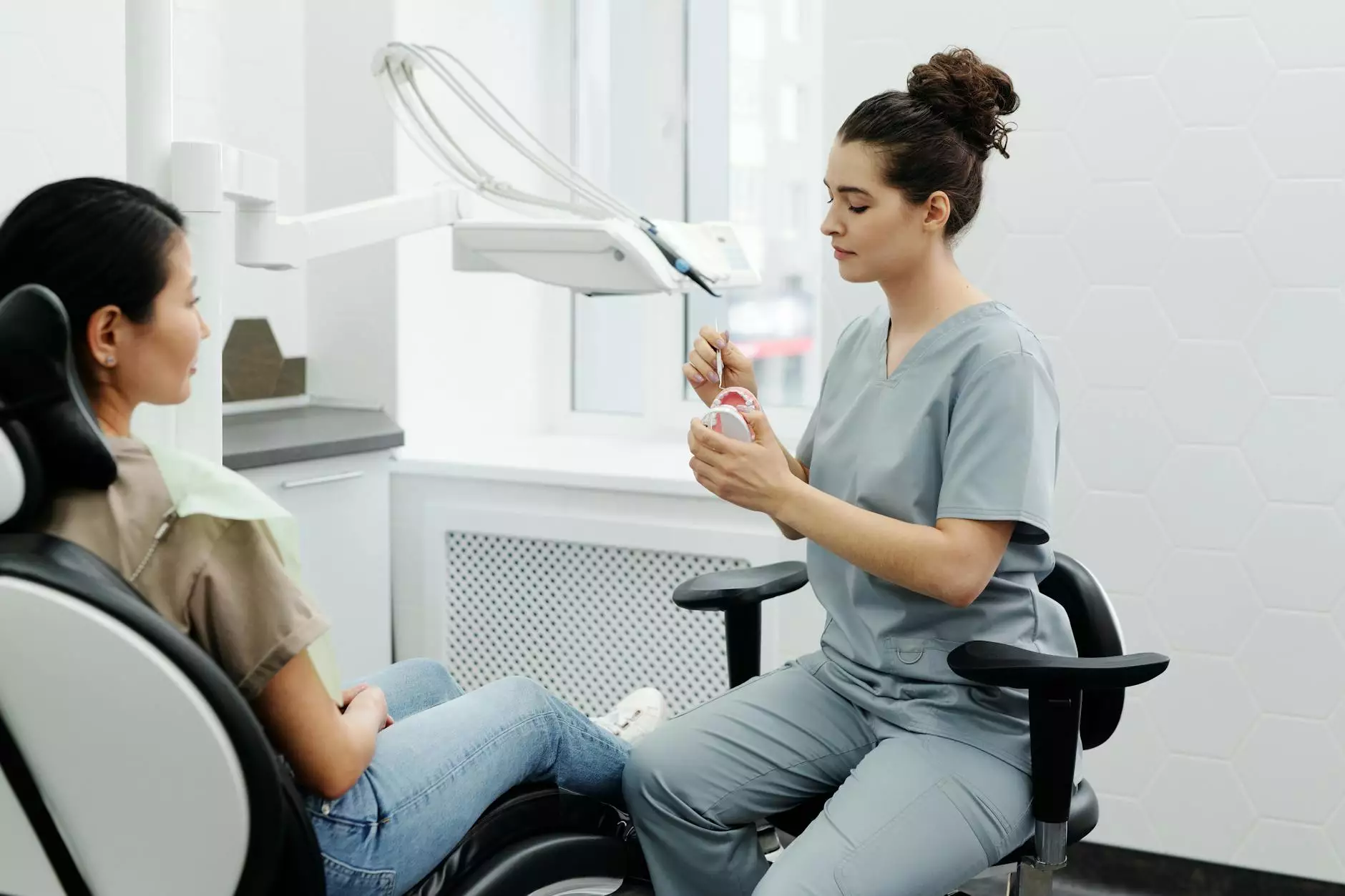Comprehensive Guide to Understanding and Managing Pain with Abduction of Shoulder

Shoulder pain, especially during abduction, can significantly impact quality of life, restricting daily activities and diminishing overall well-being. Whether you're experiencing a mild discomfort or a severe persistent ache, understanding the underlying causes, diagnostic procedures, and treatment options is crucial. This article offers an in-depth exploration into pain with abduction of shoulder, providing valuable insights for patients, healthcare professionals, and wellness advocates alike.
Introduction to Shoulder Anatomy and the Significance of Abduction
The shoulder is one of the most complex and versatile joints in the human body, allowing a wide range of motion necessary for virtually all upper limb activities. Abduction, the movement of raising the arm away from the body's midline, is essential for tasks like reaching overhead, throwing, and elevating objects.
Understanding the intricacies of shoulder anatomy can help in identifying why pain occurs during abduction. The main components include:
- Glenohumeral joint: the ball-and-socket joint connecting the humerus to the scapula.
- Rotator cuff muscles: a group of four muscles—supraspinatus, infraspinatus, subscapularis, and teres minor—that stabilize the shoulder.
- Ligaments and tendons: connective tissues that support joint movement and stability.
- Bursa: small fluid-filled sacs reducing friction between tissues.
Any disruption or injury within these structures can lead to pain during abduction, often indicating underlying pathology that needs careful evaluation.
Common Causes of Pain with Abduction of Shoulder
Several medical conditions can result in shoulder pain during abduction, ranging from minor strains to complex structural injuries. The primary causes include:
1. Rotator Cuff Tendinopathy and Tears
Rotator cuff tendinopathy, characterized by inflammation or degeneration of the rotator cuff tendons, frequently causes pain when raising the arm. Complete tears, especially of the supraspinatus tendon, can dramatically impair abduction, resulting in persistent pain and weakness.
2. Shoulder Impingement Syndrome
This condition occurs when the tendons of the rotator cuff or the subacromial bursa become compressed underneath the acromion process during arm elevation, leading to sharp pain and limited movement.
3. Frozen Shoulder (Adhesive Capsulitis)
A condition marked by stiffness and pain due to thickening and tightening of the shoulder capsule. Pain during abduction is common, especially in the early stages, often intensifying with movement and at night.
4. Shoulder Bursitis
Inflammation of the bursae reduces smooth movement within the joint, causing pain during abduction that can limit arm elevation.
5. Labral Tears
Injuries to the cartilage rim around the glenoid socket can cause instability and pain during shoulder abduction, especially with overhead activities.
6. Osteoarthritis of the Shoulder
Degenerative joint disease can lead to cartilage loss, bone spurs, and inflammation, culminating in pain during movement, particularly abduction.
7. Shoulder Instability and Dislocation
Previous dislocation episodes or ligament laxity can cause shoulder instability, resulting in pain with certain movements like abduction.
Symptoms Associated with Pain during Shoulder Abduction
Identifying accompanying symptoms helps in narrowing down the cause. Typical signs include:
- Persistent ache or sharp pain during arm raising
- Weakness or inability to lift the arm fully
- Swelling or redness around the shoulder
- Limited range of motion
- Pain at night or during rest
- Grinding or catching sensations during movement
Diagnostic Approach for Pain with Abduction of Shoulder
Accurate diagnosis is vital for effective treatment. Healthcare providers typically employ a combination of the following:
Physical Examination
- Assessment of range of motion in all planes
- Strength testing of shoulder muscles
- Specific maneuvers like Neer and Hawkins-Kennedy tests to evaluate impingement
- Stability tests to detect laxity or instability
Imaging Studies
- X-rays: detecting bone spurs, arthritis, or dislocations
- MRI scans: detailed evaluation of soft tissues including rotator cuff tendons, labrum, and cartilage
- Ultrasound: dynamic assessment of tendons and bursae
Effective Treatment Strategies for Pain with Abduction of Shoulder
Modern medical and holistic approaches focus on alleviating pain, restoring function, and preventing recurrence. Key strategies include:
Conservative Management
- Rest and activity modification: avoiding movements that exacerbate pain
- Ice and heat therapy: reducing inflammation and soothing tissues
- Physical therapy: targeted exercises to improve flexibility, strengthen shoulder muscles, and restore optimal movement
- Non-steroidal anti-inflammatory drugs (NSAIDs): alleviating pain and swelling
- Corticosteroid injections: in cases of severe inflammation or impingement
Surgical Interventions
When conservative measures fail or in cases of severe structural damage, surgeries like arthroscopic rotator cuff repair, subacromial decompression, or labral repair may be necessary. Advances in minimally invasive techniques have reduced recovery time and improved outcomes.
Rehabilitation and Prevention of Shoulder Pain
A well-rounded rehabilitation program emphasizes strengthening shoulder stabilizers, improving posture, and increasing flexibility. Incorporating preventive measures is essential for maintaining shoulder health:
- Regular shoulder conditioning exercises
- Proper ergonomics during daily activities
- Avoiding repetitive overhead motions without adequate rest
- Maintaining good body mechanics
- Prompt attention to shoulder injuries to prevent chronic issues
Specialized Care from Healthcare and Medical Experts
For persistent or severe pain with abduction of shoulder, consulting specialists such as orthopedic surgeons, sports medicine physicians, or physiotherapists is crucial. They can tailor treatment plans based on individual needs, often integrating cutting-edge therapies like regenerative medicine or advanced surgical techniques.
The Role of Education and Chiropractors in Shoulder Health
Education plays a vital role in empowering patients to manage and prevent shoulder issues effectively. Chiropractors, as part of holistic healthcare, focus on spinal and joint alignment, soft tissue manipulation, and ergonomic advice that can alleviate shoulder pain and enhance functional movement. They often work alongside medical professionals to ensure comprehensive care.
Emerging Trends and Future Directions in Shoulder Pain Management
Research in regenerative medicine, stem cell therapy, and biologics is opening new vistas for shoulder injury treatment, promising faster healing and better outcomes. AI-driven diagnostics and personalized rehabilitation protocols are also revolutionizing how clinicians address shoulder pain.
Conclusion: Achieving Restored Shoulder Function and Pain-Free Movement
Understanding pain with abduction of shoulder involves recognizing its multifaceted nature—from musculoskeletal injuries to degenerative diseases. Early diagnosis, appropriate treatment, diligent rehabilitation, and preventive strategies are key to regaining full shoulder function. With advancements in medical science and a holistic approach, individuals suffering from shoulder pain can look forward to improved quality of life, enhanced mobility, and long-term joint health.
At iaom-us.com, we are dedicated to providing expert insights, innovative therapies, and personalized care options for those experiencing shoulder issues and related health concerns within the realms of Health & Medical, Education, and Chiropractic. Take proactive steps today to protect and restore your shoulder health!









